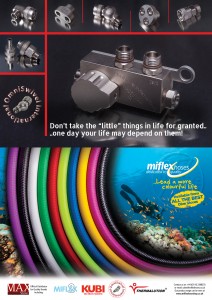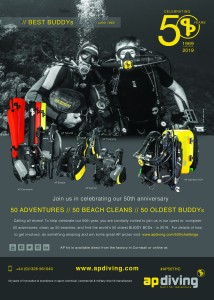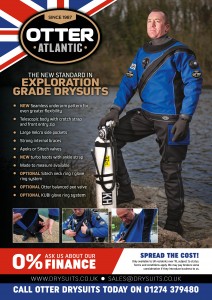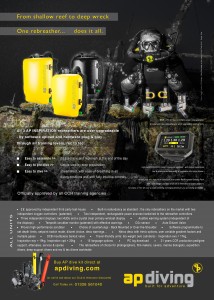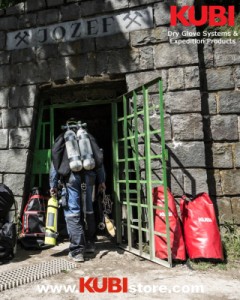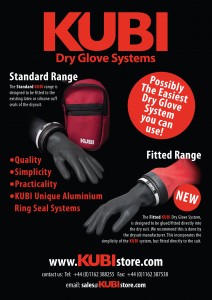DICTIONARY OF EGYPTIAN SHIPWRECKS E
DICTIONARY OF EGYPTIAN SHIPWRECKS- E
S.S ECOCINE
The Eocine was originally built as the 4,218 Grt. Tanker S.S. Fort McHenry at the Bethlehem Shipbuilding Corp., Ltd., Baltimore, Maryland, US, (Yard No. 125). The ship was launched on 01 February 1922 and completed the following August with a length of 103.7 meters, beams of 15 meters and draught of 8.4 meters. Propulsion was provided by two 200-PSI Boilers and a triple-expansion engine provided by Ellicott Machine Corp., Baltimore, Maryland, which generated 395 NHP. (Cylinder diameters: 23, 39, and 65-inches with a 42-inch stroke.) Single Shaft and Propeller and a maximum speed of 10 knots. The ship was designed to carry fuel and other petroleum products in bulk. She had two decks below the main deck and her propulsion machinery and engineering compartments were located aft.
In 1923, the ship was sold to the Vacuum Oil Co., Inc., New York, New York, and renamed Vacoil. In 1929 the ship was sold again to the Deutsche Vacuum Oel A.G., Hamburg, Germany, and renamed Schulau. Sold again in 1935 to the British company of Standard Transportation Co., Ltd., Hong Kong, (Later to become Mobil Oil Corp.) and renamed Eocene. The ship was transferred in 1941 to the Socony-Vacuum Transportation Co.(Also part of Mobil Oil) and was requisitioned for war use by the Ministry of War Transport (MoWT).
Not much information has been located concerning this ship’s history. However, one item found concerns the Eocene undertaking a special mission in the early years of WWII. On 01 September 1939, the ship under the command of Captain Robert E. Brett, was on passage to the Baku oil fields located in the Black Sea when Captain Brett was directed to proceed to the port of Constanza, Romania where the ship was met by the local British Consul. Unbeknownst to Captain Brett, arrangements between the British and Polish governments had been made to use the Eocene to transport 75 tons of gold bullion reserves belonging to the Bank of Poland beyond the reach of the invading Nazi forces. The gold bullion was loaded onboard the ship and on the night of 16 September, under the cover of darkness, slipped the ship’s mooring lines and quietly departed Constanza and set a course for Istanbul. The ship held to coastal waters and arrived at her destination on 19 September where the gold was transferred to Turkish authorities who had arranged for further transport of the gold bullion to French ships waiting in Beruit.
Between 25 November 1939 and 18 May 1942, the Eocene made 55 voyages throughout the Mediterranean Sea carrying fuel and supplies for the Allied forces.
The Eocene’s final voyage would be on 18 May 1942. Departing from Alexandria as part of Convoy AT-46/M under the command of Master H.W. Wilcox with a cargo of 1,980 tons of benzine and 3,700 tons of water, the ship was enroute to Tobruk when, at 2019 on the afternoon/evening of 20 May, she was attacked, torpedoed, and sunk at approximate position 31.57N/25.11E or 31.56N/25.14E in 300-plus meters of water by German U-Boat U-431 (Wilhelm Dommes) off of Sollum. The ship’s Master, 34 crew members, 6 gunners, and two army engineers were rescued by the British armed trawler HMS Coccker (ex-KOS XIX*) and delivered to Tobruk. No casualties reported.
(* The HMS Cocker would later be sunk just off of Tobruk on 04 June 1942.)
S.S. ELIFINI. F
The Greek steamship of 7549 tons ,485 ft long was inbound to Alexandria from Rotterdam when she struck a floating wreck. Her engine room and no. 4 hold flooded and she was beached near the Great Pass leading into the harbour on January 3rd, 1968
During a storm 3 days later she broke in two the stern sinking into deeper water and the fore-section capsizing.
S.S. EL GIZA
An Egytian motor general cargo vessel built in 1963, she was 2030 tons , 78 mtrs long and carrying a cargo of peanuts and cotton. She was 5 miles north of Alexandria when fire broke out, in her engine room sweeping through her holds on Jan 2nd 1977. The crew abandoned ship and the vessel drifted until she finally ran aground at Abu Qir.
M.V EL IMAN ALY
The Egyptian motor tanker El Iman Ali was built in 1928 by Wm Doxford & Son. at Sunderland. She was an 80 mtrs long motor tanker and had an un eventful 35 year career until she ran aground at Ras el Hekma , near Alexandria on January 26th 1983, during heavy seas and strong winds. Her bottom plates torn out the engine room flooded and she was deemed to be a total constructive loss
EL ABASS:
El Abbas was 298 GRT gunboat of the Egyptian Coast Guard during WWI. Based out of Sollum, the ship was attacked and sunk on 05 November 1915 by the German U-Boat U-35 (Waldemar Kophamel). Another Egyptian gunboat was also damaged in the attack, the Nour el-Bahr, but survived the attack.
Some sources state that the ship was sunk off of Sollum, while others state that the ship was sunk while anchored.
M.V EL GIZA
A 7197 TON, 441 FT long general cargo vessel, owned by The Egyptian Navigation Co, The MV El Giza was bound from Alexandria to Italy with a cargo of peanuts. Five miles out she caught fire and was abandoned, blazing and partly submerged she drifted for over a month until she ran aground to the east of Boghas Pass near AL
M.V ELLIOT
The 100 mtr long, 2874 ton motor vessel was built in 1963, and sank 200mrs north of Ras Dib on July 11th 1984 with a cargo of 3500tons of chic peas. Owned by the Panamania company of Ugars Marine. Previous names include ASK(1973), ZEPMARE (1974), JULTAND (1980)
The wreck sits upright from the engine room forward, her holds still full of the cement, now solidified. The engine block is complete although the prop shaft and stern would appear to have been removed. There is much confused metal consisting of plates pipes flanges and fittings forward of the engine block, The foc’sle is awash with her bow pointing north. The wreck lies parallel to the shore and covers an area of 100 mtrs by 30 mtrs. Fish life includes surgeon fish, lion fish, golden hatchets and founders
From the attitude of the wreck she was driven ashore at full speed with her rudder straight. There appears to have been no time or need to avoid the grounding. She is bow down into the reef in 10 mtrs of water her bow broken up and her starboard plates scattered around the seabed. The letters A-N-D, U, and J, easily discernable on the scattered plates were a great help in confirming her identity. The bow section was easy to access although the inside was a mass of confused and torn steel. Here a large shoal of golden hatchets has taken up residence. Her hull side plates, which formed the main structure of her holds have all collapsed and form a tangled jungle of steel with large girders, pies and flanges. Her superstructure, partly flooded was accessed via the aft bulkhead, allowing access into the engine room, generating plant, workshops and accommodation area. The sea bed was littered with many interesting items, such as riding lights complete with lenses, and her anchor light still stood proud on its mast.
M.Y.ENDYMION
About I mile to the north of the tugboat is the wreck of a small sailing yacht, lying on its starboard side in 18 mtrs of water, in a sandy channel between the reefs of Abu Galawa North. The history of the vessel is as yet not known, but the coral growth would indicate she is only a few years old. Given that the wreck is only 30 mtrs long it does not take very long to explore. The hull is intact and the wreck at the base of a reef over to starboard. Coral is beginning to colonise the wreck the interior is full of sweepers and hatchets, with the obligatory red mouthed groupers patrolling the shoal. The wreck can be fully explored in 10 minutes, however her elegant lines and attitude do provide the photographer with some great material.
|
What makes this a special dive is the scenery lying behind the wreck. By entering a canyon 50 mtrs from the bow flanked on either side by huge hard corals, and following the natural course the diver is lead to a huge sandy bowl where white tips rest. The surrounding scenery is of huge hard coral formations-some of the best in the Red Sea. The scenery is quite staggering and several routes through valleys can be taken, returning back to the yacht with a maximum depth of 18 mtrs.
EL ARISH
Imagine finding a wreck with lifeboats marked “El Arish”, a bell marked “El Tor” and embossed letters on the hull reading “EL ARISH EL TOR”…just another day at the office!
THE SHIP
MS El-Tor
Built 1981 A/S Bergens, Norway
Dimensions 105 x 17.3 x 4.12
12 Cyl Diesel – 6620 kW
19 Knots
1025 Passengers, 328 berths, 150 cars
IMO: 7719820
1981 – Delivered to Misr EDCO Shipping, Alexandria, Egypt
1991 – Renamed El-ARISH-EL-TOR
1999 – Sold to Sayed Nasr Navigation Lines, Cairo, Egypt. renamed EL-ARISH
Her sister ship was originally called the EL ARISH, HISTORY AS FOLLOWS
MS El-Arish
Built 1980 A/S Bergens, Norway
Dimensions 105 x 17.3 x 4.13
12 Cyl diesel – 6714 kW
19 Knots
1350 Passengers, 328 berths, 150 cars
IMO: 7719818
1980 – Delivered to EDCO Shipping Company, Egypt
1991 – Renamed DANIA MARINE
1992 – Sold to Sicilia Regionale Marittima, Italy Renamed VITTORE CARPACCIO
2006 – Sold to Usticia Lines, Italy Renamed GIANNI MORACE
In service between Trapini – Switzerland
Sister ship to El-Tor
THE FINAL JOURNEY
“last voyage January 2001 from Jeddah to Savaga 24 Hours B4 Savaga Port Happened Fair Inside engine room electric cable automatically close the doors and turn off the fair during high technology in ship equipments and berthing ship to reparse the cable after reparse all the crow make arrest from January 2001 up to 27/11/203 sunk arrested from the salary crowas my information throw the crow stolen the free shop The Goods Inside more than $100,000 And some spear Parts”
Sayed Nasr,owner el arish
The Final voyage of the EL ARISH took her from Suez to Jeddah to pick up pilgrims destined for Safaga, above is her loading condition plan on arrival at Jeddah.
The gossip columns said I had invented this wreck-an “expert” novelist claimed it didn’t exist, and yet there she was a very real intact car ferry lying on her side 12 mtrs below the surface, undived untouched, bell and compasses still in place right under the noses of several local dive centres!
The ship lay at anchor for several years, becoming a local landmark-passed by every day by local fishermen and charter boats. I remember seeing her in the old days when we had to travel to Marsa Alam by coach-often thinking to my self-“that would make a great wreck”
Then one morning she was gone. Did anybody notice, did anybody care? Most probably assumed she had sailed away.
THE DISCOVERY
Three skippers three new wrecks in one day…..Every time I mentioned the wreck to a skipper the response was always the same ”No we cant go there we’ll get arrested .Until one day a willing skipper took me to where I thought she was(finding the “Clark Chapman wreck” on the way.). It was not difficult to find-105mts of ship lying on its side,12 mtrs below the surface………
For whom the bell tolls; still in place, pretending to be a P.A Horn, her bell was located by Mike and Sue Rountree .An attempt to steal it later by a British cowboy diver was thwarted by a timely phone call to the authorities-(yes JC it was me who shopped you!!!)
More clues to her identity; the ships registration papers in the bridge and the shipping companies logo on the funnel.
The wreck is totally intact, her gentle journey to the sea bed only crushed the port lifeboats as she rolled over onto her side and settled into the sandy bottom, 30 mtrs below the surface. Her huge bulbous nose, bow thrusters and stem are heavily covered in huge soft corals and point towards the shore, a gig full of images could not capture the scene. She makes no attempt to hide her identity-the bow adorns her name ,as do the lifeboats, life belts and her bell, albeit under a thin layer of silt.
Her starboard anchor chain is draped over the bow thrusters, dropping down to the seabed and is also covered in a forest of oversized soft corals. Rounding the bow her flagstaff post and lamp precede a very short foc’s’le, fitted as you would think with huge winches for her two forward anchors.
Further evidence to suggest our dives were the first on this great wreck; her wing navigation compasses one in its gimbal and the other hanging loose-sadly stolen in Jan 2007
.The 4 story high superstructure reaches out with her coms mast and directional antenna disappearing into the gloom. What appears to be a PA horn sits central above the first row of windows, covered in algae, well at least most of us thought that-but not Mike and Sue. Inscribed with “EL TOR ALEXANDRIA 1981”,the ships bell was still in place-and still there when we left. Her navigation bridges both sported compasses, one hanging by its wire and the other still in its gimbal and entry into the navigation bridge, although restricted by an exercise bike, produced the ships certifications, still in glass frames. Her electronic navigation equipment was still intact- a mere coating of thin silt obscuring the details. At the risk of repeating myself again,” it would seem that no had been here before”
Swimming aft, along her lifeboat deck the boats still with their Day-Glo orange paint repeat her name, not the name on her bell but her third and final entry in the Lloyds register “EL ARISH”
Reaching the aft section, 105 mtrs from the bow, a complex arrangement of stairwells and rails linking 4 levels afford themselves to more growth and beyond is a magnificent sight-2 huge propellers and rudders covered in soft corals over 2 mtrs long-the biggest I have ever seen in any part of the Red Sea. Another gig full of memories. Photographic delights at both ends of the wreck!
At a convenient depth of 20 mtrs, the return journey to the start point can be made along her promenade deck, the lattice work of supports for the sunshade canopy are festooned in more soft corals and it is easy to examine her funnel and its shipping line emblem. Even plastic notices marking muster points still remain in place, as do fire hoses and lifebelts.
What a find-an intact 100mtrs wreck in 30mtrs,diveable in all conditions suitable for all levels of divers, guess I must have imagined it after all.
I.N. ELATH
The Israeli destroyer had been the Z CLASS H.M.S ZEALOUS, built by Vickers Arm strong during 1943.She was one of many vessels of her type, a fast anti submarine destroyer-many off her sisterships had names beginning with z thus the classification; Zambesi, Zebre, Zest etc. Fitted with twin geared Parsons turbines giving them a speed of 36knots (a charter boat normally does 8!), their dimensions of 110mtrs by10mtrs beam and a 3 mtrs draught made them fast and sleek-ideal for hunting –and destroying submarines. By 1955 these vessels were deemed obsolete and surplus to the Royal Navies needs and were either scrapped or sold off. Two of these vessels HMS ZEALOUS and HMS Zodiac were sold to Israel and two, HMS Zenith and HMS Myngs (they must have run out of names beginning with Z) to Egypt .
On October 21st 1967 during the Six Day War the Elath was 14 miles off Port Said, when she was sunk with 4 “ Styx” miles from the Egyptian-Komar class missile carrying gun ships.47 of her crew died with may of the 151 survivors injured. She had been zig- zagging in the bay of Romani-in and out of territorial waters, taunting Egyptian radar- A month earlier she had sunk two Egyptian gun boats. She was the first vessel to be sunk by missiles. The wreck has been located in 21mtrs of water14 miles north east of Port Said.
THE WRECK OF EL QAHER (ex HMS MYNGS)
The border port of Port Berenice, sheltered by the long curving nose of Ras Banas, must have seen some nautical comings and going over the last 2000 years. The bones of many ships will no doubt lie seep in the sand-The scant remains of the stern of the Altas seem to diminish as the years go by. Several other wrecks lie here too, but diving them is very difficult and heavily restricted.
In 1955 the Royal Navy decommissioned several of its “Z”(ZAMBESI) class destroyers. These were fast (35knot) vessels, sleek and manoeuvrable and designed primarily as sub chasers. While many of the vessels were scrapped 4 were sold on-Two to Egypt-HMS MYNGS (to become the AL QAHER), H.M.S.ZENITH (to become the AL FATHA ) and two to ISRAEL, HMS ZEALOUS and HMS ZODIAC( to be renamed ELATH and YAFFA respectively) ELATH IS FEATURED IN CHAPTER 10.
Sold to Egypt in 1955 and renamed the EL QAHER, serving in the Egyptian Navy she went through a major refit in 1969-70, with upgraded electronics (Russian) and had returned to her base at Port Berenice to continue her duties. This was the period of the “phoney war”-between the 6 day war and Yom Kippur wars.
In MAY 1970 12 F4 Phantoms of 201 squadron based in Hattor and 69 Squadron (The Hammers) armed with MK117 bombs attacked the vessel in Operation Keshet Avira (Ariel bow) while it was at anchor.Bristling with anti aircraft guns and a new firing tracking system held off several attacks despite being hit by sidewinder missiles and countless rounds from the planes in wing cannons. With a range of 800 miles the aircraft could sustain a prolonged attack over the target. With a still decimated air force the Israelis carried on the relentless attack un hindered from the air .Fires spread throughout the vessel and internal explosions raked the ship. Eventually the 300 ft destroyer settled by the stern , her entire superstructure ablaze.
As she sank she swung round on her anchor and grounded on a coral shelf ripping her bow plates open-her draught only 3 mtrs. Thus leaving her fore- section and superstructure above water.
The wreck sits perched on a large rock, her bow and fore guns sticking out of the water. It is possible to swim under her aft keel and view the twin props and rudders adorned with soft corals – maximum depth 27 metres. Endless dives can be made swimming through her accommodation area, control rooms and view the twin torpedo tubes and stern guns, submerged, complete with shells in the breech, barrels pointed skyward… she went down fighting.
S.S. EMPIRE PATROL
The Empire Patrol was passenger cargo ship of 3220 GRT built at Stablimento Tecnico, Trieste (San Marco Yard No. 760) as the Rodi for Soc. Anon. Adriatica Nav., Trieste. Her keel was laid 08 April 1927, launched 17 December 1927, and completed 25 April 1928. She was 317-feet 2-inches in length, 44-feet 10-inches in beam, diesel powered with a single propeller and a 10-knot service speed (maximum speed of 15 knots).
The ship was seized as a war prize by the British at Malta on 10 June 1940, re-named Empire Patrol, and used by the Royal Navy as a mine depot ship. Turned over to Ministry of War Transport (MOWT) in 1941 and managed by the Prince Line (Furness Withy).
While in MOWT service, the Empire Patrol, being of Italian build, encouraged an attempt by the Royal Navy to deliver stores and materials from Alexandria to Malta unescorted. On 01 November 1942, the ship departed Alexandria loaded with 1200 tons of aviation fuel and 300 tons of benzine (all in cans) to be delivered to Malta.
The ship was ordered to proceed east of Cyprus, through Turkish waters wearing Turkish colours, then to turn westward and sail under Italian colours as if the ship was of Italian registry on the commonly used Italian route from the Dardanelles to southern Italy. The Commanding Officer had total discretion to abandon the attempt if it was felt that this disguise was compromised.
As the ship was plagued with electrical and diesel problems, and after having been closely scrutinized by a German reconnaissance aircraft, the Commanding Officer (a LT. RNR) abandoned the attempted passage and entered Famagusta on 03 November.
The sinking of the Empire Patrol:
On 29 September 1945, the Empire Patrol set sail from Port Said with 497-500 Greek refugees returning home to their island of Castelorizo (79 male, 210 female, 182 children). Approximately 38 miles out of port, the ship experienced a fire (cause unknown), which spread throughout the entire ship. An S.O.S. was sent out which resulted in the escort carrier HMS Trouncer (Capt. Geoffrey Alexandr Rotherham), HMS Devonshire, HMS Mermaid, and HMS KLO all responding. The HMS Trouncer arrived late in the day and commenced rescuing the ship’s passengers. However, it would not be until the following day that the remaining ships would arrive.
As the fire spread throughout the ship, the order to lower lifeboats and abandon ship was given. Many passengers were trapped at either end of the ship and jumped directly into the water.
The ship was on fire at location 31.56N/32.45E and, after all rescue attempts were complete, the ship was taken in tow on 01 October 1945. While enroute to Port Said, the ship sank at position 31.30N/32.33.30E.
Thirty-Three people lost their lives (some sources state 38 lives lost). The HMS Trouncer is credited with saving 450 from the burning ship, although this may in fact be in error as there were other ship involved which picked up survivors in the water.
M.V. ESCAUT
A Belgium motorship, built in 1938, 1087 tons, 230 ft long, she was taken over by the British navy to be used as a depot ship, and while off Point Attika in the Gulf of Suez, she was bombed by German aircraft on August 3rd 1941 “17.3 cables 232degrees from south beacon ships head, Attika Bay”
M.V.ERGINA 1
A 9335 TON bulk cargo motor vessel, the Ergina 1 was on a voyage fr0m Rumania to Somalia with 15000 tons of bagged cement when she ran aground on September 1 1983 in the Gulf of Suez (28 02 30 n 33 22 18 e).For 10 days attempts to refloat her failed, then fire broke out in her engine room, spreading through the accommodation. Her 24 crew were safely evacuated and she was declared a total loss.
M. Y. EXCALIBUR
This is the remains of a dive charter vessel, which belonged to the Sussana Diving centre and sunk under mysterious circumstances. The 21mtr wooden yacht sits upright in 20 mtrs. Her mast stands vertical off the starboard bow and the saloon is full of glassy sweepers. Her bowsprit and general elegant lines make her very photogenic, and a good dive in bad weather or at the start or end of a safari.
M.V. EXPRESS 11
On a journey from Libyia to Beirut, the 976 ton ,224 ft Cypriot motor vessel, used for transporting live stock, ran aground “45 miles west of Alexandria” on January 17th, 1974 in heavy weather returning in ballast. She was owned by the Cattle Sea Transport Co, and was built in 1953.
FURTHER DETAILS CAN BE DOWNLOADED FROM
www.KUBIstore.com & www.Miflexhoseshop.co.uk
